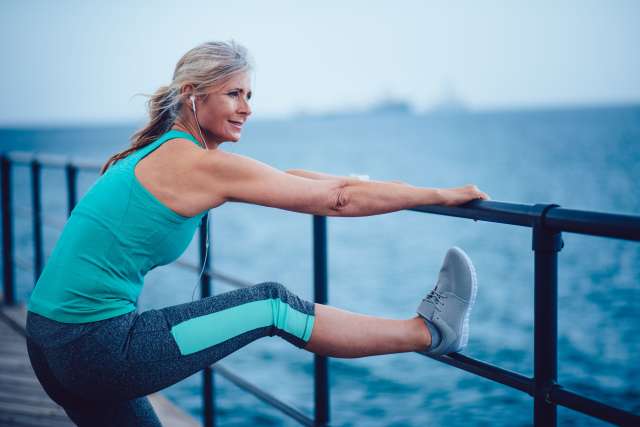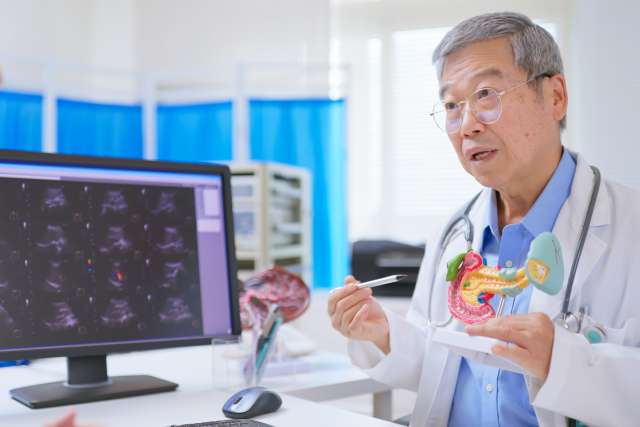As some California schools prepare to resume in-person instruction, parents and teachers have a new round of safety concerns to consider.
Are school buses safe? What about recess and lunch? And how can parents and grandparents protect themselves from contracting COVID-19 once children return home from school each day?
“Children are a major reservoir for this and other viruses, so if they get it in school, they’re likely to infect their parents and grandparents,” says James D. Cherry, MD, MSc, distinguished research professor of pediatrics at the David Geffen School of Medicine at UCLA. “Children tend to carry more virus than adults, so they are potentially more contagious. And a disproportionate number of them are mildly ill or not ill at all, so that’s a problem.”
While the American Academy of Pediatrics agrees in-person education plays a critical role in children’s social and emotional development, Dr. Cherry says the risk of returning to school without reducing class sizes and mandating masks and social distancing is “incredibly great.”
The Los Angeles County Department of Public Health approved reopening area schools beginning Sept. 14 for students with special needs and English-language learners. The new rules call for organizing students into “cohorts” of no more than 12, with the same small group of students together consistently, and limiting on-campus attendance to 10% of the total student body.
In-person instruction for the county’s general student population won’t resume until November at the earliest, county Public Health Director Barbara Ferrer said Sept. 10.
Standard state immunization requirements still apply for students returning to campus: Children must show records of polio, diphtheria, tetanus, measles, rubella, mumps, pertussis and hepatitis B vaccines to enroll in any California school. Limited exemptions are still granted with a written doctor’s note.
But at least until a vaccine for COVID-19 becomes available, parents, teachers and students must take precautions throughout the school day and beyond to avoid spreading the virus.
Getting to school
Look for alternatives to taking the bus, says UCLA Health pathologist Shangxin Yang, PhD. “You could think of riding a bus as having a party: You have a lot of people crowded into a very limited space.”
He cites a recent paper published in JAMA Internal Medicine that found a bus rider in China who showed no symptoms of COVID-19 spread the virus to more than 20 fellow passengers, even those sitting far away.
“This study lays out a very good example that it’s probably not a good idea to put a lot of kids onto a bus,” Dr. Yang says. “I think bus riding is generally a big risk factor.”
He suggests walking to school instead, or forming a carpool group with one other family: “If you limit the number of people, the chances will be much lower.”
In the classroom
Besides limiting class size to allow for social distancing, masks for everyone and ample ventilation are essential.
Even the youngest students should wear masks, says Dr. Cherry, an attending physician of pediatric infectious diseases at UCLA Mattel Children’s Hospital. “The number-one thing is wearing face coverings and finding some method to cut class size so you can effectively social distance, both in the classroom and outside,” he says.
Air circulation inside the classroom is equally important.
“You don’t want to shut the windows and just have the AC blowing — that’s the perfect environment for the virus to circulate,” says Dr. Yang.
A virus spreads through large and small respiratory droplets, Dr. Cherry explains. The large particles, which are attached to proteins, are the most contagious, but social distancing ameliorates their risk. “Those particles are heavy and drop to the ground,” he says. Smaller particles are easily diluted outside, particularly in sunlight, or with ample air flow.
Whenever possible, students should avoid sharing supplies such as crayons and toys. Young children tend to put their hands, and any objects they can reach, into their mouths, which could spread the virus through saliva on shared items, Dr. Yang says. This shouldn’t be a concern with older students, who understand the importance of hand-washing and are far less likely to put shared objects in their mouths.
There’s also very low risk in students and teachers handing papers back and forth, as long as everyone practices good hygiene.
“In general, the most common route of transmission is person to person through droplets and aerosols,” says Dr. Nava Yeganeh, MD, MPH, a pediatric infectious disease specialist at UCLA Mattel Children’s Hospital. It’s possible that touching contaminated surfaces and then touching eyes and mouth could lead to infection, “and the main way to avert this is to regularly wash your hands.”
Teachers and students should wash their hands frequently and refrain from touching their mouth, nose and eyes.
School bathrooms can be safe, Dr. Yeganeh says, as long as the number of children allowed inside at the same time is limited, masks are worn, there is adequate soap to wash hands, and high-touch surfaces are regularly disinfected.
At recess and lunch
Recess presents a safety challenge, particularly for elementary-school students. Gone, at least for now, are the days of free play, climbing on the monkey bars or tossing a ball around. Physical distance is critical, even outdoors.
“If you ever watch kids at recess, it’s a vibrating mess,” says Dr. Cherry. He suggests more supervised activities during break times — something akin to traditional physical education — with lots of teachers supervising and keeping kids apart.
It’s a good idea to have lunch outside, as well, and to maintain social distance at mealtime. “Just because you’re eating doesn’t mean you’re less infectious,” Dr. Yang says.
Lunch breaks are a prime time for the virus to spread, he says: Masks are off, people are socializing and they naturally let their guard down. “That’s the exact opportunity for the virus to be able to find a niche,” he says. “We just have to be vigilant all the time. It’s very hard, because this is already becoming a marathon. People are tired of it and want to get back to normal life.”
Food sharing ought to be a thing of the past, too.
Regardless of the temptation, any unwrapped edibles present a risk of transmission, says Dana Hunnes, PhD., a clinical dietitian at Ronald Reagan UCLA Medical Center. Teachers should also be mindful of the shared refrigerator in the teachers’ lounge: The handle may be a hotspot for germs. Same goes for water taps and the communal coffee pot, Dr. Hunnes says.
It’s important to wash hands often and wipe down high-touch surfaces, Dr. Yeganeh adds.
After school
The potential dangers don’t end when the school day does: Children can easily bring the virus home. Immunocompromised relatives are particularly vulnerable.
“As far as parents, and for people at home in general, I’m afraid that’s a risk,” says Dr. Cherry. “I think social distancing, even at home, is important. And the younger the child, the harder that is.”
Dr. Yeganeh notes that many preschools have been open throughout the summer without resulting in major viral flare-ups or spreading of infection to family members.
“Although possible, there’s little evidence that children are more likely to infect their families than adults,” she says. “Most preschools are open in LA County, even through the July surge, and few cases and outbreaks have resulted.”
Still, close contact is the primary means of transmission. Books and backpacks aren’t the issue: inhaling droplets from an infected person is.
“There’s a big misconception regarding COVID-19 among kids,” Dr. Yang says. “Kids can get infected and they shed as much of the virus as adults.”
And because schools have been closed since the start of the pandemic, it’s unclear what role children actually play in communal spread, he says.
“We protected our kids. We didn’t let them be exposed to the community, which is why there are much fewer pediatric cases,” Dr. Yang says. “There shouldn’t be a false belief that kids do not transmit the virus and school will be safe.”
For the latest information on COVID-19, visit the UCLA Health Coronavirus Information page.



